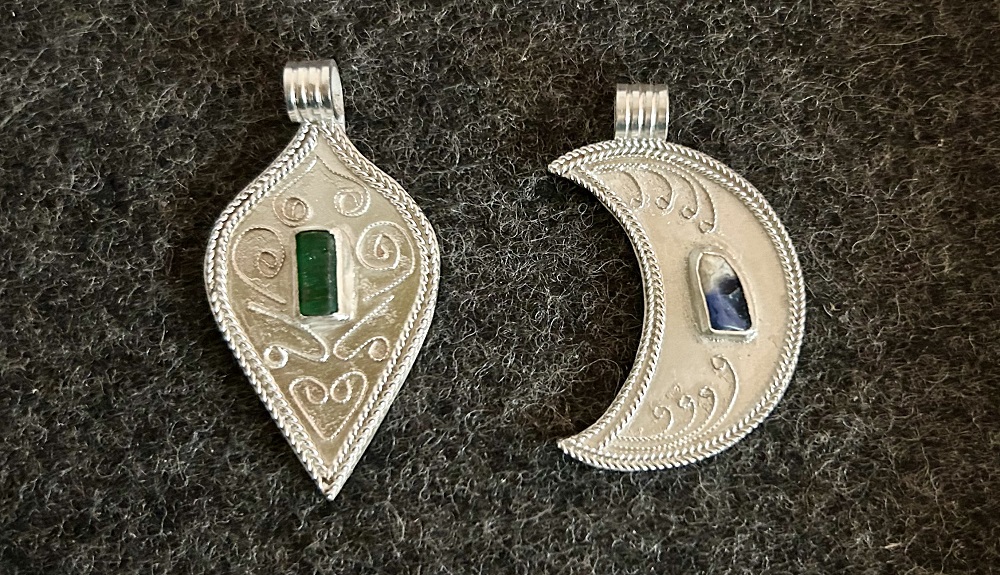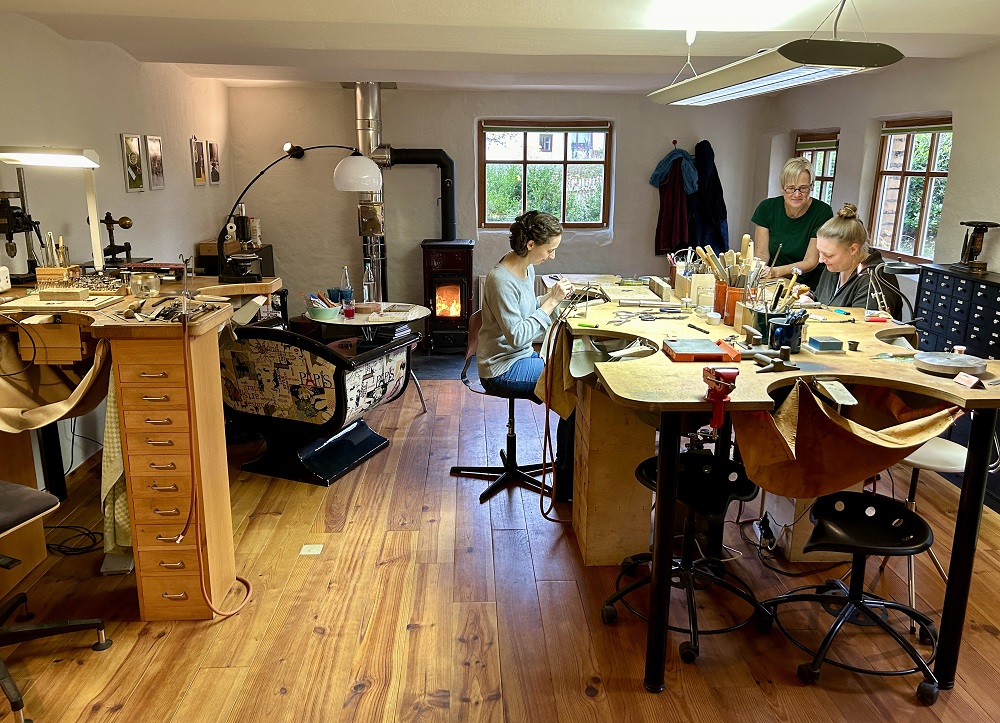We were amazed when we received a very special call in the summer of 2023: One Restorer from the Württemberg State Museum asked us whether we could also organize further training events or Seminars on the topic of “Historical Goldsmithing Techniques”. And whether we can do that… 😉
The various large state museums in Germany, with their respective focus on regional or supra-regional cultural landscapes, make a significant contribution to ensuring that our common cultural heritage can be professionally recovered, restored, catalogued, scientifically processed, described and thus preserved and ultimately made publicly accessible.
In November of the same year the time had finally come: with pride and a little bit of awe, we were able to welcome the two specialists into our newly renovated course studio and around the brand new crackling wood fire. Ideally, both of them had completed the rather long journey from Stuttgart to us the day before and the accommodation in a beautiful holiday home nearby guaranteed them a comfortable and relaxed start to this special event the following day goldsmith course.
First of all, we naturally asked the two restorers about their main focuses and their specific expectations of this two-day event. Both wanted an overview of the most important goldsmithing techniques since antiquity and, above all, practical testing of some selected techniques using specific projects. So both of them finally decided to make a silver pendant in the style of the Roman Empire, which they used, for example...
- the production of a beading wire,
- the production of a waffle foil,
- the production of precious metal beads,
- sawing out historical pendant shapes from a sheet of precious metal,
- pulling and twisting wires made of precious metals,
- the production of a Roman braided wire,
- the making and arranging of filigree jewelry,
- the production of gemstone settings,
- the soldering of ornaments and frames,
- attaching an eyelet and even
- the production and assembly of a gemstone setting including setting a gemstone
…experienced and tried things out for ourselves. We were only too happy to provide two gemstones, one of which was a rough emerald that was typical of the time, and other prepared materials.
While the two specialists tried out a variety of goldsmith's work techniques, we were able to pass on our knowledge and experiences on, among other things, the following historical goldsmith's techniques - some even clearly using our goldsmith's replicas:
- Forms of historical gemstone settings
- Types of decorative elements made from drawn, twisted or corded wire
- Basics of soldering precious metals since ancient times
- Historical techniques for cutting gemstones
- Manufacture from simple filigree to three-dimensional filigree
- Pearl borders
- Grinding almandines, e.g. for brooches
- Pickling of precious metals
- Types of gilding and their priming
- granulation
- Swap
- Enamelling
- Use of gemstones since ancient times
- Types of other decorative elements on historical goldsmith objects
- Historical chain shapes
- Types of disc brooches
- Blowing vessels made of precious metal using an example
- Use of a wide variety of metals and materials in historical goldsmith craft
- and finally some exciting craft anecdotes about selected finds from the last decades
The practical projects of the two restorers were correspondingly demanding and the two seminar days were therefore filled to the brim with theoretical and practical experiences, for example how the implementation of selected goldsmithing techniques actually feels and the level of craftsmanship involved.

At the end, two visibly satisfied seminar participants were proud to take home their own small jewelry replicas. When you consider that all of this was created in just two days, we can only say: hats off!
In any case, we are still happy about the wonderful and rare opportunity to share our knowledge of historical goldsmithing techniques at such a high level.
That's why: I'm happy to come back at any time... 😉

